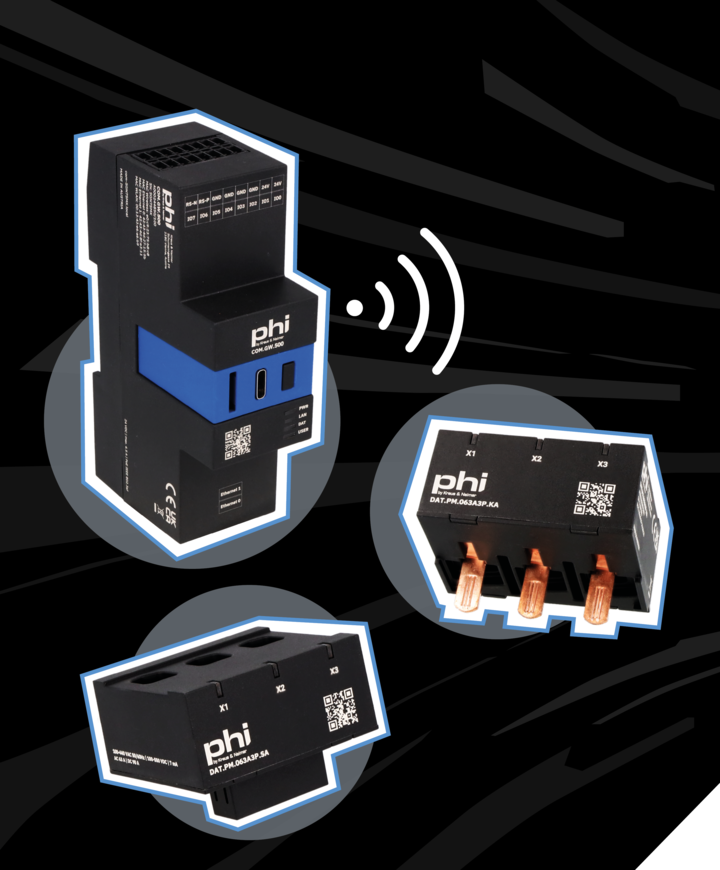
Manufacturing Industry
With the phi modules, Kraus & Naimer offers a modular solution for intelligent acquisition and communication of energy data – flexibly applicable in the manufacturing industry and many other sectors. At the core are two central components: the communication module (COM) and the measurement modules (DAT).

DAT Module
The measurement module (DAT.SA and DAT.KA) precisely records electrical parameters such as current, voltage, and power. It is scalable for various applications and can be installed directly at relevant consumption points.
COM Module
The communication module (COM) acts as a gateway for up to 16 DAT modules. The data from the DAT modules is transmitted wirelessly to the COM module. Serving as the customer interface, the COM module forwards this data to higher-level systems via standardized protocols such as Modbus RTU/TCP, Ethernet or MQTT. An integrated web server (WebUI) enables user-friendly data visualization and configuration.
The following usage scenario exemplifies how our technology can support you in practice by creating transparency, optimizing processes, and using energy more efficiently.
Usage Scenario
Energiy monitoring in the manufacturing industry
with phi by Kraus & Naimer
Your challenge
Many production facilities still lack transparency about where and when energy is consumed. Without systematic energy monitoring, inefficient consumers often go unnoticed, leading to unnecessarily high energy costs and a poor CO₂ balance. Moreover, continuous improvement of energy efficiency – as required by ISO 50001 – is hardly possible without precise data.

Our solution
The phi modules from Kraus & Naimer enable detailed recording of energy consumption of machines, systems, and processes. Through standardized interfaces such as Modbus RTU/TCP or MQTT, the data can be integrated into higher-level systems – for example, HMIs or data platforms like Open.inc.
The result
Example: Example: By using phi modules in a manufacturing facility, load peaks can be precisely identified. If phi modules are additionally installed in an existing PV system or data from the PV system is integrated, these load peaks can be shifted to periods with the highest PV yield. At the same time, the foundation for a certifiable energy management system is created.